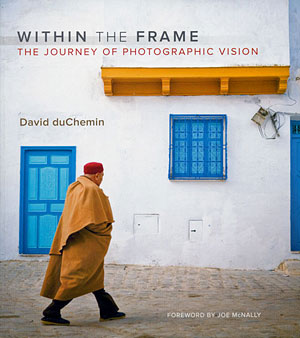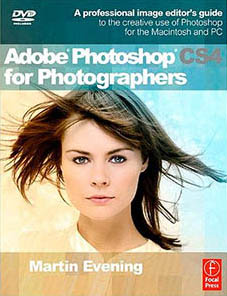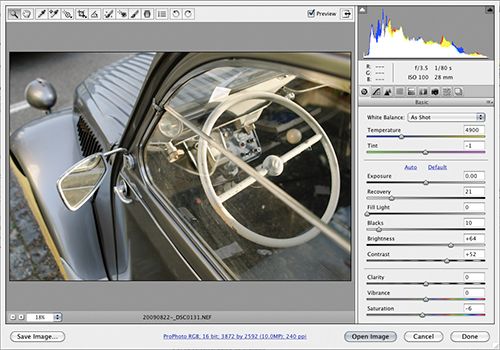Posted on March 12, 2010 by Bahi Para
Categories: Blog
Posted on March 12, 2010 by Bahi Para
Categories: Blog
A clutch of stuff from around the web: what photo buyers want from your web site, what technical tests don’t tell you, retouching before the age of Photoshop, some photography business resources and a piece about putting all the technical stuff into context. But first…
Unlike many stories about the importance of backup, this one has a happy ending. Matt Kloskowski, of Lightroom Killer Tips, is teaching at Gulf Photo Plus in Dubai and found that a cloned copy of his MacBook drive, Fedex’d from the US, reached him just in time for him to be able to teach his first class after his internal drive failed. Read Matt’s story here and if you need to, you can remind yourself of our recommended Lightroom backup strategy.
This is one for younger photographers. Joerg Colberg over at Conscientious has a typically interesting article about retouching and improving negatives and prints—and we’re certainly not talking about scans here. Take a look. (If, like us, you’d rather stick with your Wacom tablet, we mentioned an excellent Photoshop book for photographers in this post a couple of days back.)
Though it’s usually John Harrington or Dan Heller making the running in this area, it’s worth keeping up with Photoshelter’s information on running a photography business. They talk about SEO, workflow, licensing, selling and more. Obviously, they’re trying to sell you Photoshelter accounts (not a bad thing—we’ve used Photoshelter and might cover their services in a future article) but the information is good in its own right.
What people say they want isn’t always reliable—we know that.
There’s a Nikon story that says when the company surveyed its professional customers about an emerging technology called autofocus a couple of decades back, it learned that pros couldn’t care less about it. Hindsight reminds us that autofocus happened to be a bit slow and rubbish at the time. Perhaps it’s not surprising today, then, to learn that when other companies took the idea seriously and released decent autofocus systems, Nikon quickly lost a bushel or two of market share. The company had believed its survey results and hadn’t taken the idea of autofocus seriously enough. I don’t think the pros who answered the survey were lying: they really believed that they didn’t want autofocus and they just happened to be wrong.
Henry Ford is famously quoted as saying that if he’d asked his potential customers what they wanted, they’d have asked for a faster horse. You get the idea.
Now, with all that said, take a look at this result from a survey of photo buyers:

Above: an excerpt from the Photoshelter 2009 Buyers’ Survey.
That’s fairly representative of the surprises in store in the survey. If you’re reading this, you almost definitely have a web site for your work or are at least thinking of building one so look at this Photoshelter page about what photo buyers say they want from photographers’ web sites. The big surprise for me when I watched this last year was the general lack of love for big photos and the overwhelming demand from buyers for thumbnails of small photographs. That seems to run counter to the trend but then, new trends often don’t survey well, as the stories above suggest. (I share photo buyers’ loathing for auto-playing Flash sites, as it happens, particularly if they begin to play music without being asked.)
If the survey page whets your appetite, there’s also a presentation of the buyers’ survey results in an hour-long movie. Its glacial pace makes it a little frustrating at times but there is actually some very useful information in there. If you’re just about to build a site or overhaul one and you make sales online (or hope to), it’s definitely worth the hour spent.
There’s a very good article from the inestimable Ctein about what tests don’t tell you, published on Mike Johnston’s outstanding site The Online Photographer. Ctein provides an example of how banding (which you see often see in high-ISO work, especially when you push a low-light exposure) is rarely reflected in the noise measurements of digital cameras that you see online, even though it’s a form of noise. He uses it as just one example of how tests can be incomplete. The comments that follow the article are just as relevant, too.
Ctein is a wizard, famous for his dye transfer prints, among other things. Even his regular small inkjet prints (we have a couple in the form of some Christmas cards that he mailed to his supporters last year) are something special. Kodak once called him the world’s best printer and I can believe it.

Photographer David duChemin is the writer and photographer of a very warm, uplifting book called Within the Frame (Amazon US, Amazon UK
), a book of travel photography and the author’s approach to it.
Last week, David published on his blog a piece called Confessions of a So-Called Pro to help put all the technical stuff into context and remind us what’s really important about photography.
It’s well worth reading. Here’s an excerpt:
I often leave my ISO dangerously high. I get more email about why I shot something at ISO 800 than anything else and that tells me (a) I should get my act together and (b) y’all need to lighten up on the whole ISO issue.
Well said. David duChemin also publishes electronic books for $5 each and if you like his work, you’ll enjoy this audio interview (free) that he did with Ibarionex R Perello for The Candid Frame podcast. I probably shouldn’t have been surprised to hear that Mr duChemin was once a standup comedian…
You can get all our articles for free by e-mail or RSS. We run one-on-one Lightroom courses in London for professional photographers and serious amateurs, although in the light of David duChemin’s article, above, perhaps “serious” isn’t the right word…
Thanks to our friend Danny De Vylder, who sent us our copy of Within the Frame last year and introduced us to David’s work.
Posted on March 11, 2010 by Bahi Para
Categories: Blog
Up until some time in 2007, more and more photographers switching from film to digital photography were turning to Adobe Photoshop (sometimes used together with Adobe Bridge) to perform routine post-processing tasks. Simple changes to tone, contrast, white balance and exposure, and the usual dodging and burning—all were being done in a relatively cumbersome application designed for much more complex things. That situation is changing quickly, with many of you now doing that kind of work in Lightroom or Aperture. (There are now many digital photographers—even those who shoot raw—who don’t use Photoshop at all and that number will rise.) However, there are still some things that just can’t be done in Lightroom: if we need to adjust the colour of an object or part of an image, or need to add or remove small elements by some means other than cropping, it’s still Photoshop that we turn to.

You could probably fill a small shop with examples of all the weighty volumes on Photoshop but there’s one book we can recommend for photographers who’d like to get the best out of Photoshop CS4 for regular photographic post-processing work (rather than t-shirt design or the million-and-one other things that Photoshop is also used for). It carries a suitably no-nonsense title: Adobe Photoshop CS4 for Photographers is by Martin Evening and is published by Focal Press. It’s written by a professional photographer for other photographers and it does the job very well. You can find it at Amazon UK, Amazon.com
or any larger bookshop. Those Amazon links will also allow you to browse through some pages of the book. (If you’re in London, Foyles in Charing Cross Road always has it, albeit at full retail price.)
This isn’t a book of just screen shots, small captions and white space. It tells you exactly what you need to know for the detailed post-processing of your own digital photography and does so in words rather than just pictures, meaning that to enjoy the book, you need to be comfortable reading a fair amount of text. However, it doesn’t assume or require any previous Photoshop knowledge—it’s perfectly suited to someone starting from scratch.
Before getting into the use of Photoshop, Martin devotes a couple of chapters to the setup and configuration of the application and your computer. Two chapters might seem a little excessive but if you get CS4 set up correctly, the resulting performance improvements usually repay any time spent. It’s quite common to see Photoshop performing sluggishly on quite capable hardware, for want of some quick changes to its setup.
Martin Evening’s approach is well suited to Lightroom users; he makes it clear in the book that he has chosen to use Lightroom himself to manage his own work and he documents that approach quite well. (He even has a book on Lightroom—Amazon UK, Amazon US
.)

Above: the Adobe Camera Raw plugin (included with Photoshop) being used to import a raw file into CS4. Same controls as Lightroom’s develop module, different interface
One chapter of Photoshop CS4 for Photographers is devoted to Adobe Camera Raw (ACR), which will seem familiar to Lightroom users, even those who haven’t yet used Photoshop CS4. Camera Raw’s code and functions are very similar to those of Lightroom’s Develop module, though its interface is very different. That matching code base allows very close integration between Lightroom 2 and Photoshop CS4— you can move Lightroom image edits intact into Photoshop and continue to be able to adjust them within CS4. For example, you could adjust for chromatic aberration even while correcting for something like lens distortion— just open the image in CS4 as a smart object from Lightroom. It’s worthwhile becoming familiar with ACR if you’re primarily a Lightroom user intending to dip into Photoshop—it deserves the chapter it gets in the book.
Evening’s book also provides a good basic grounding in colour management and it comes with a DVD that contains example files and a good collection of demonstration videos. It’s worth watching those before you start on the book itself. You’ll be equally comfortable dipping in for answers (there’s a decent index) or making your way through the whole book, step by step. You’ll finish knowing exactly how to work on photographs non-destructively in Photoshop CS4, doing the things that aren’t possible in Lightroom—particularly detailed healing & cloning, colour changes to areas of an image and the use of elements from different images. (You’ll learn how to make and quickly finesse selections and masks and how to use layers and adjustment layers to get that sort of work done.) And, of course, you’ll be able to integrate Photoshop CS4 into your Lightroom 2 workflow.
You can find Martin’s work here. If it’s your kind of thing, you might be interested in watching this episode of George Jardine’s excellent podcast series that covered early versions of Lightroom.
There’s an interesting video of a discussion (18 minutes) between the Knoll brothers and two key Adobe employees, filmed this year, about the genesis of the application that Thomas Knoll wrote and how it became known as Photoshop.
We’ve added Martin’s book to our store for UK and European readers.
If you’re more comfortable with face-to-face training, you’re in the right place. We’re taking bookings for March and April for our Lightroom courses in London. We have an offer available for emerging photographers who are currently turning professional or are thinking of doing so. There are still spots available for March!
Posted on March 6, 2010 by Bahi Para
Categories: Blog
Many of you subscribe to Shoot Raw updates by e-mail but if you’re reading this in your inbox, it’s probably the first update you’ve had from us for some time. That’s because there was some invalid code in an article we published a few weeks ago about how to back up your Lightroom work.
The service that sends our articles out by e-mail is Google’s Feedburner, which (we now know) silently stops sending e-mail updates to subscribers when it hits a problem with invalid code in one of the articles it’s supposed to mail.
There were four articles that weren’t sent to e-mail subscribers, though they did make it to those of you who get the RSS or Atom feed:
There’s one in particular that we’d like you to glance at, especially if you’ve been hoping to book some training but have been worried about cost:
Alternatively, you can just visit the blog and read them all there on a single page. From today, you should be getting your e-mail updates the usual way—when we publish an article, you’ll get it mailed to you in the morning. When we don’t publish anything, no e-mail is sent.
Several of you have subscribed since the problem began and will have experienced a resounding silence since you joined. If you’re new, welcome! You can expect more regular updates in the future. (Till the next time we break something…)
If you find the articles useful, please forward them on to anyone else whom you think might be interested. Thank you!